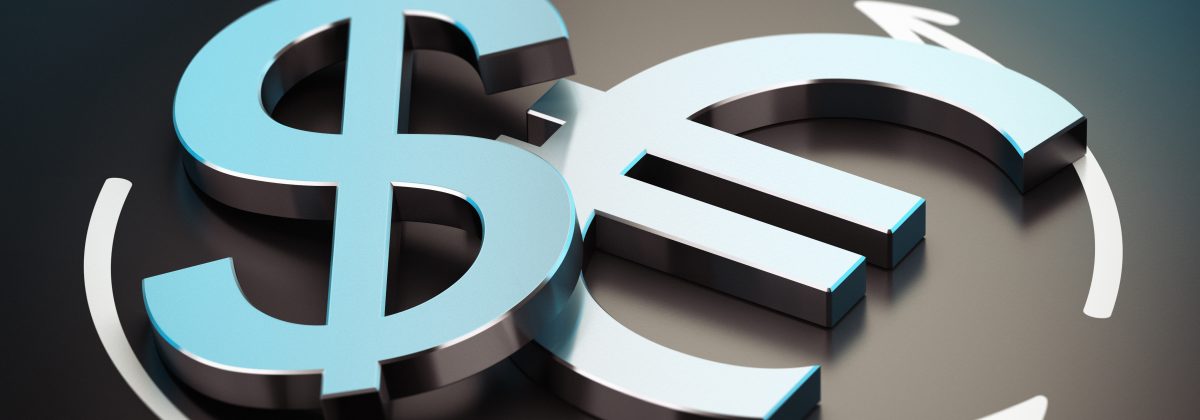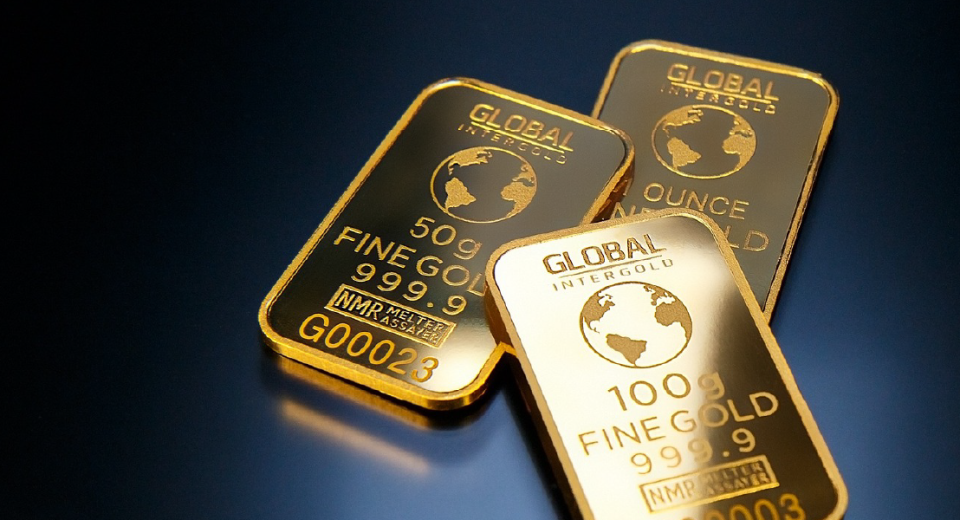Euro to Dollar History

Economists define money as something that fulfills three main roles for an economy – a store of value, a unit of account and a medium of exchange. For an international currency, these functions are further subdivided according to the sector of use, both official and private. In the 19th century and the first half of the 20th century, it was the Great British Pound that was a prominent international currency, used for monetary transactions and international trade in the vast British empire.
With the decline of the British Empire in the 20th century, the US dollar replaced it. Since then, the dollar has been the world’s reserve currency, used in international trades and debt contracts. Today, central banks and governments all over the world hold their foreign exchange reserves in dollar denominations.
Emergence of the Euro
The idea of the euro was first introduced by Gustav Stresemann from the League of Nations, in 1929. Decades later, in 1971, US President Nixon removed the gold standard, resulting in the collapse of the Bretton Woods Agreement. In 1979, the European Monetary System (EMS) was created and by 1988, France, Italy and the European Commission had agreed upon the creation of a single monetary union. Over the next 3-4 years, the plan to create a European system of central banks took shape. In 1992, the Maastricht Treaty was signed, outlining the decision to create a single European currency.
On January 1, 1999, a new currency, called the euro, was created, aimed at creating an economic and monetary union in Europe. It replaced the currencies of 11 European nations, including Finland, France, Germany and Spain. Greece joined the group two years later. For the first time in history, the US dollar had a potential rival as the primary currency for international settlements.
The European countries had their existing domestic currencies set at a fixed exchange rate against the euro. They continued to use their own currencies until physical notes were introduced in 2002.
Why Was the Euro Created?
The original idea of a single European currency was in discussions from the early 1960s and through the 1970s. The volatile currency markets were posing a threat to the key economic agreements of the European Economic Community (EEC).
To counter this threat, the EEC tied its currencies to a new currency unit (European Currency Unit or ECU). This was a digital currency, which derived its value from a basket of several European currencies. Under this system of convergence of monetary policies, many economic benefits were observed, which further increased the demand for a single currency system.
Thus, when the euro was created, costs and risks associated with cross-border transactions were greatly reduced. Countries began to trade with each other smoothly, taking advantage of the absence of exchange rate risks. GDP growth across the Eurozone remained consistent from 2002 to 2007. Price parity across all European nations and employment figures were seen rising.
EUR/USD: The Early Years
The EUR/USD currency pair denotes the amount of US dollars (USD) required to buy one unit of euro (EUR). It is one of the most widely traded currency pairs in the world today, since it represents two major global economies. At the same time, it has been around for only a short period of time, compared to other currencies like the GBP/USD. Before that, the German deutschmark against the US dollar and the French franc against the US dollar were the big pairs.
In 1999, when the euro was first launched, the exchange rate of the EUR/USD was 1.1686, the first official exchange rate between the two currencies. It hit a high of 1.1906 on the first day of trading. EUR was brought into circulation with 38 billion coins and 7 billion notes in 2002.
By the end of 1999, the EUR had dropped to parity with the USD. It dropped below parity several times between 2000 and 2002. On October 26, 2001 the EUR/USD was trading at 0.8296; by January 15, 2002, the value stood at 0.8115.
The currency was in a digital mode at this time, with several domestic currencies pegged at fixed exchange rates to the EUR. These currencies depreciated before the advent of the physical euro, leading to depreciation of the EUR too. However, prices started rising during 2002-2007, until the US went into recession in 2008.
EUR/USD & the US Recession
The years from 2008 to 2014 were tumultuous for the pair, due to US recession and subsequently the Eurozone crisis. Between December 2007 and June 2009, the US recession, a result of the sub-prime mortgage crisis, initially boosted the EUR’s value. Increase in demand for the EUR, along with interest rate slashes by the US Federal Reserve led to the EUR/USD pair reaching a value of 1.60 in July 2008.
The second half of 2008 was a time of crisis across the EU. The effects of the US recession shook countries worldwide, and many EU banks had to be bailed out or had to pay back debt, which could not be re-financed across the slow global markets.
The EUR/USD fell to USD 1.26 in November 2008. In the meantime, between 2007 to 2009, Slovenia, Cyprus, Malta and Slovakia joined the Eurozone. It would not be before late 2009 that the EUR/USD would partially recover from this crisis, only to reveal that Greece had been hiding its debt levels using accounting practices that didn’t confer to the rules imposed by the EU’s Stability and Growth Pact (SGP).
The Greece Debt Crisis
When the news came out that not only Greece but countries like Portugal, Spain and Italy had all over-leveraged themselves, European investors decided to sell their bonds in these affected countries. By June 2010, the EUR/USD was trading at 1.20.
Members started to bail out member states that were running a risk of default. Something like this was against the terms of the EU treaties. A new system was developed, called the Special Purpose Vehicle or the European Financial Stability Facility. New rules came into existence, where countries in deficit had to justify their debt, and those with debt of more than 60% faced stricter sanctions.
International bodies like the IMF and World Bank reportedly spent €544 billion since 2009 to bail out countries. The Stability and Growth Pact, introduced in 2011, streamlined the reform process, but shook investor confidence in countries like Greece, Germany and Spain. The EUR/USD saw major price changes from 2009 to 2014, due to many political uncertainties in the Eurozone, interest rate adjustments in the US and fears of a Ukraine crisis.
2015 Onwards
The US recovered from the recession by 2015, which led to the strengthening of the US dollar in relation to the euro. The European Central Bank launched a quantitative easing programme to boost the EU economy, interest rates were kept low to counter the high interest rates of the US Fed. The EUR/USD pair traded low.
In 2016, Britain decided to leave the EU, causing the EUR/USD rate to drop down to US$1.14 on June 23, 2016 (referendum date), further plunging to US$1.11 the next day. It remains to be seen whether Brexit, scheduled for March 2019, concludes on a good or bad note for the EU and UK. That will have a significant impact on the volatility of the EUR/USD pair.




